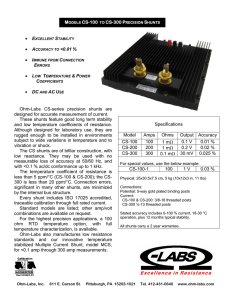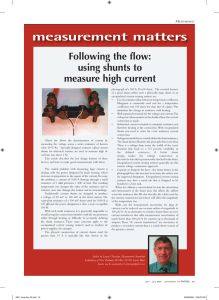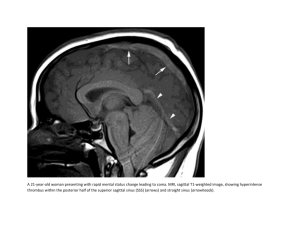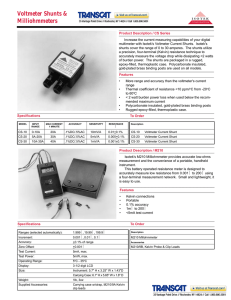BVR Press Fit Module
advertisement
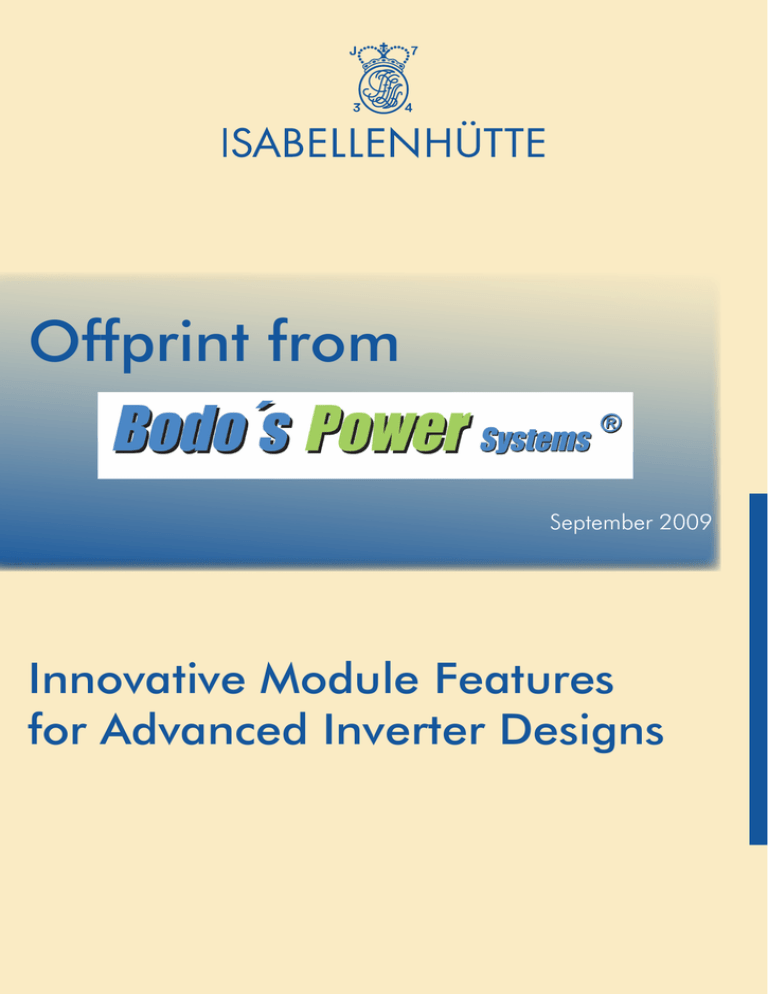
Offprint from September 2009 Innovative Module Features for Advanced Inverter Designs BodosPower_09-09_Infineon,Siemens,Isabellenh..qxp 15.10.2009 09:44 Seite 1 IGBT MODULES Electronics in Motion and Conversion September 2009 Innovative Module Features for Advanced Inverter Designs PressFIT, Duplex-Frame Packaging and Shunts The most fundamental challenges in connecting power electronics to PCB materials relates to reliability and lifetime expectations. Today the majority of connections regarding power electronic modules of up to 200A rated chip current today consists of soft-soldered joints. Nevertheless, cost pressure and the demand to speed up manufacturing have pushed the development of alternative contact technologies making the time consuming soldering process obsolete. By Dr.-Ing. Martin Schulz, Infineon Technologies, Warstein, Germany, Dipl.-Ing. (FH) Reinhold Dillig, Siemens AG, Erlangen, Germany and Dr. rer. nat. Ullrich Hetzler, Isabellenhütte, Dillenburg, Germany In cooperation with Isabellenhütte, the leading manufacturer for high precision shunts, and Siemens AG Drives Division in Erlangen, Infineon Technologies has developed a power electronic module combining highly reliable, solder-free connections to the PCB with innovative packaging along with current-sensing shunts for peak currents up to 150A. Reliable Connections In addition to soldering, new contact technologies have evolved over the last couple of years. Spring-force contacts and pins that rely on being pressed into the PCB came up as coexisting ideas. Infineon has decided to offer PressFIT pins in the Econo2 and Econo3 series and has recently expanded this method to products of its Easy series as well. At the PCIM 2009, Infineon introduced the SmartPIM and SmartPACK that all feature PressFIT pins as well. When it is inserted into the PCB, the PressFIT pin is deformed in a predefined manner, forming a cold welded connection with the surrounding material as shown in Fig. 1. Figure 1: Micro sectional view of a PressFIT-pin after insertion www.bodospower.com September 2009 Bodo´s Power Systems® 1 BodosPower_09-09_Infineon,Siemens,Isabellenh..qxp 15.10.2009 09:46 Seite 2 IGBT MODULES Cold welded connections qualify as gas-tight connections that are very inesntitive hazardous atmospheres. They are also resistant to vibrations and cyclic mechanical load. These qualities make PressFIT the predestined technology for high current density contacts as well as for sense and control connections. This is reflected in the Siemens Standard SN295005-5 Edition 2004-06 relating to the failure rates of components. The standard lists FIT-rates for different connection techniques as summarized in Table 1. Process Conducting area in mm² Failure rate λref in FIT1) Notes: Standards/guidelines PressFIT 0.3 to 2 0.005 IEC 60352 – 5 Soldering manual automatic – 0.5 0.03 IPC 6102), class 2 spring force 0.5 to 16 0.5 DIN EN 60999 – 1 Depending on the size of the PCB in use, additional bolt spacers close to the module can be omitted. A customized version of the Smart module - as a member of the MIPAQ™ family - was engineered to specially suite the needs of Siemens. The module is integrated in a braking chopper within the Sinamics S120 drive system. It has a half-bridge topology utilizes shunts to measure the outgoing current. The cut away diagram in figure 4 shows the shunt and the PressFIT pins in detail. 1) 1 FIT = 1 x 10-9 1/h → one failure per 109 component hours 2) Acceptance conditions for printed circuit boards Standard SN 29500-5 / Edition 2004-06: Failure rates of components Table 1: FIT-rates for different contact technologies It can be concluded from the standard that PressFIT has a higher reliability than soldered connections but offers drastic improvement compared to spring force contacts. Innovative Packaging With the Smart package, Infineon invented a module concept that provides a self-acting PressFIT within a mounting procedure that decouples the mounting forces from joining forces. The so called Duplex Frame is separated into an inner module and a surrounding frame. The construction ensures that only a predefined portion of the forces applied by the mounting screw is transferred to the inner module thus protecting the DCB from being damaged. The construction, as displayed in Figure 2, is especially designed to apply the necessary forces to form an excellent thermal interface using thermal grease. Figure 3: Mounting a Smart-Type Module The shunt’s resistance is calculated to provide 150mV at the rated chip current. It is obvious, that the connection between the shunts and PCB is critical; a voltage drop or contact failure at the connection would falsify the measured instantaneous current value. Two pins transfer the signal from each shunt forming the sense connection while groups of six pins conduct the load current of up to 150A with 25Arms being the rated current for a single pin. Figure 2: Excellent distribution of thermal grease is achieved. Experimental setup with glass plate Besides the ruggedness and the controlled forces applied to the module, the straightforward mounting procedure only needs a single screw to be tightened to establish the connection between the PCB, power module and heat sink in a single, time saving step as highlighted in Figure 3. 2 www.bodospower.com Bodo´s Power Systems® Exhaustive tests have been performed to ensure that the connection’s high initial quality is retained over the module’s lifetime. As the connection between the shunt and the DCB could also influence the measurement, tests were made to determine the lifetime of this particular joint regarding power and thermal cycling. The results of these tests formed the basis for specific design rules for the shunt’s DCBlayout. The results also clearly indicated that under typical application conditions the cycle life of the material drastically exceed expectations - reaching more than ten million cycles. September August September 2009 2009 2009 Bodo´s www.bodospower.com Power Systems® BodosPower_09-09_Infineon,Siemens,Isabellenh..qxp 15.10.2009 09:47 Seite 3 IGBT MODULES The mesurement in Figure 5 shows that despite the temperature swing due to power losses inside the shunt the relationship between current and measured voltage is truly linear: An increase of the case temperature increases the thermal stress on the shunt but the result stays within reasonable limits, as can be seen in Figure 6. Figure 4: Customized Smart module featuring shunts and self-acting PressFIT High Precision Current-Sensing Shunts According to Ohm’s Law, the voltage across a resistor is proportional to the current flowing through it. However losses inside the shunt inherently occur. Mounting the shunt in the IGBT module makes it easier to dissipate these losses through the inverter’s heat sink. Despite the losses, using low resistive shunts as current sensors provides numerous advantages when compared to other solutions: - wide temperature range of -50°C to >150°C - easily integrated using well established processes - insensitive to EMI - no hysteresis - no offset - immune to overcurrents caused by short circuit - small dimensions - single part solution - excellent long term and temperature stability despite the large temperature range - outstanding power- and thermal cycling stability - very low weight reduces mechanical stress if vibration occurs Figure 5: Voltage and temperature increase as a function of DC-current; DUT: Shunt with 1mΩ at 25°C case temperature To achieve a precise measurement independent of temperature effects, special metal alloys have to be used to make sure that the temperature drift of the sensor itself is kept at an absolute minimum. Isabellenhütte as the leading manufacturer for high precision measurement devices has created shunts based on ISAOHM®. This is a patented alloy with extraordinary temperature and long-term stability. In cooperation with Infineon, a new shunt was developed based on the BVR-series. This particular shunt now perfectly suits both the requirements of the application in which the module is used and the demanding environment of the module itself. www.bodospower.com Figure 6: Changes in the measurement due to an increase in the temperature; DUT: Shunt with 1mΩ, I=100ADC These measurements prove, that the utilized shunts provide an accurate reading under full power and even in a temperature range that can exceed 200°C. This particular attribute makes shunts the sensors of choice for the integration into power electronics. Over the last years, the operating temperature of IGBTs has continuously increased and it is fair to assume that this trend will continue. Today IGBT4 can operate at temperatures up to 150°C. This has been driven by the market demand for higher power densities. Any futureproof sensor technology to be integrated into power electronic devices will have to cope with these harsh conditions. Today, despite numerous developments of the last years, shunts remain the only technology that can fulfill all of these requirements. Summary The new self-acting PressFIT technology reduces mounting time and simultaneously increases mounting ruggedness and connection reliability. Along with the Duplex-Frame concept that has been introduced, it has become easier to mount power electronic components and failures due to mounting can be excluded. Integrating the current sensor into the power module saves valuable PCB-space and the shunts can easily dissipate power losses to the heat sink. This way, the shunt can handle higher currents compared to being mounted on the PCB and hot spots on the printed circuit board are avoided. Despite the high temperature levels, the sensor used provides an excellent accuracy. All these features, combined in a single package, support the costefficient design of compact and highly reliable inverter systems. September 2009 www.infineon.com/highpower www.siemens.com www.isabellenhuette.de Bodo´s Power Systems® 3 ISABELLENHÜTTE Heusler GmbH & Co. KG Eibacher Weg 3-5 · 35683 Dillenburg Postfach 14 53 · D-35664 Dillenburg Telefon (027 71) 9 34-0 · Telefax (027 71) 2 30 30 www.isabellenhuette.de info@isabellenhuette.de
